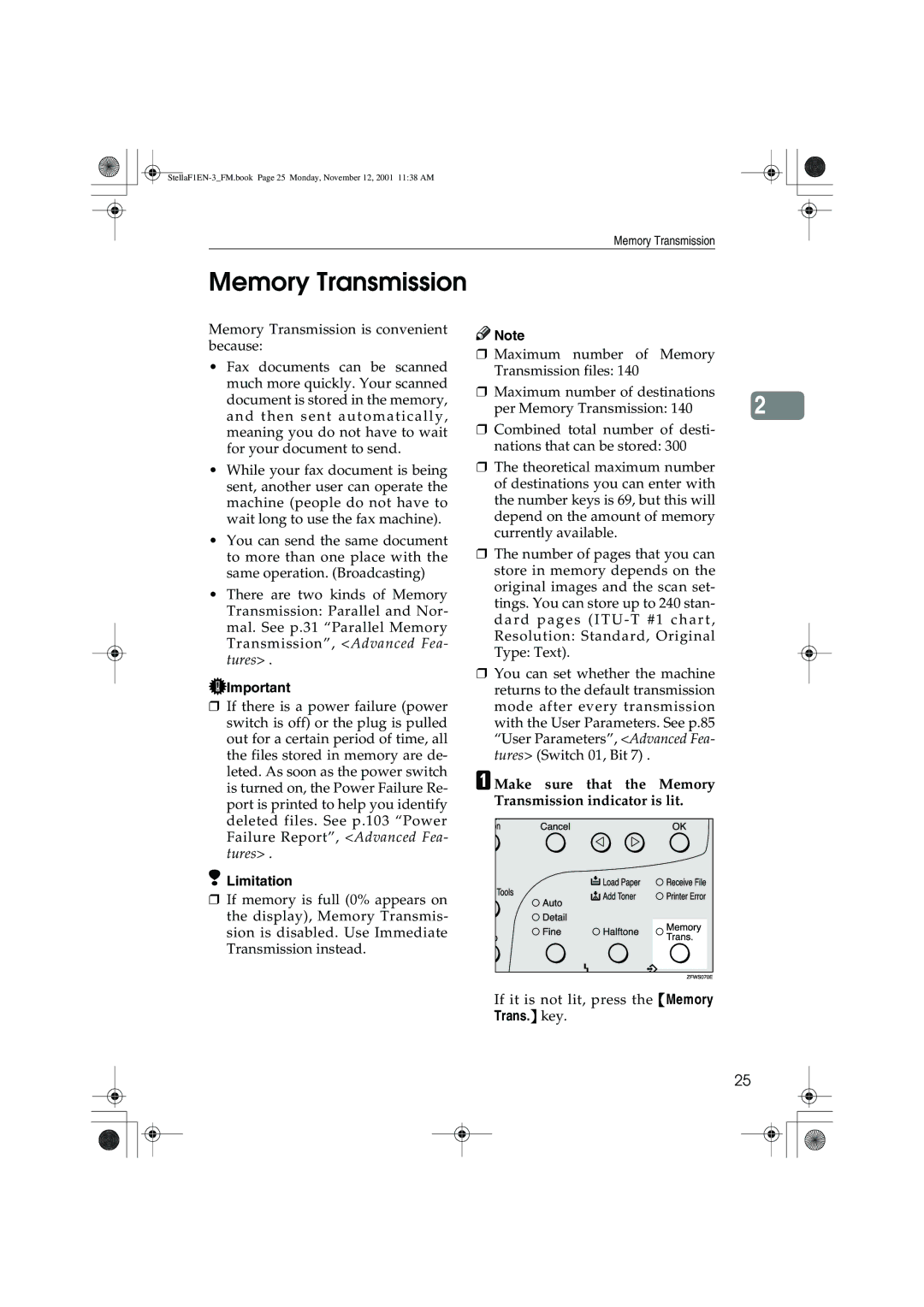
Memory Transmission
Memory Transmission
Memory Transmission is convenient because:
•Fax documents can be scanned much more quickly. Your scanned document is stored in the memory, and then sent automatically, meaning you do not have to wait for your document to send.
•While your fax document is being sent, another user can operate the machine (people do not have to wait long to use the fax machine).
•You can send the same document to more than one place with the same operation. (Broadcasting)
•There are two kinds of Memory Transmission: Parallel and Nor- mal. See p.31 “Parallel Memory Transmission”, <Advanced Fea- tures> .
![]() Important
Important
❒If there is a power failure (power switch is off) or the plug is pulled out for a certain period of time, all the files stored in memory are de- leted. As soon as the power switch is turned on, the Power Failure Re- port is printed to help you identify deleted files. See p.103 “Power Failure Report”, <Advanced Fea- tures> .
Limitation
❒If memory is full (0% appears on the display), Memory Transmis- sion is disabled. Use Immediate Transmission instead.
Note |
|
❒ Maximum number of Memory |
|
Transmission files: 140 |
|
❒ Maximum number of destinations | 2 |
per Memory Transmission: 140 |
❒Combined total number of desti- nations that can be stored: 300
❒The theoretical maximum number of destinations you can enter with the number keys is 69, but this will depend on the amount of memory currently available.
❒The number of pages that you can store in memory depends on the original images and the scan set- tings. You can store up to 240 stan- dard pages (ITU - T #1 chart, Resolution: Standard, Original Type: Text).
❒You can set whether the machine returns to the default transmission mode after every transmission with the User Parameters. See p.85 “User Parameters”, <Advanced Fea- tures> (Switch 01, Bit 7) .
A Make sure that the Memory Transmission indicator is lit.
If it is not lit, press the {Memory Trans.} key.
25
